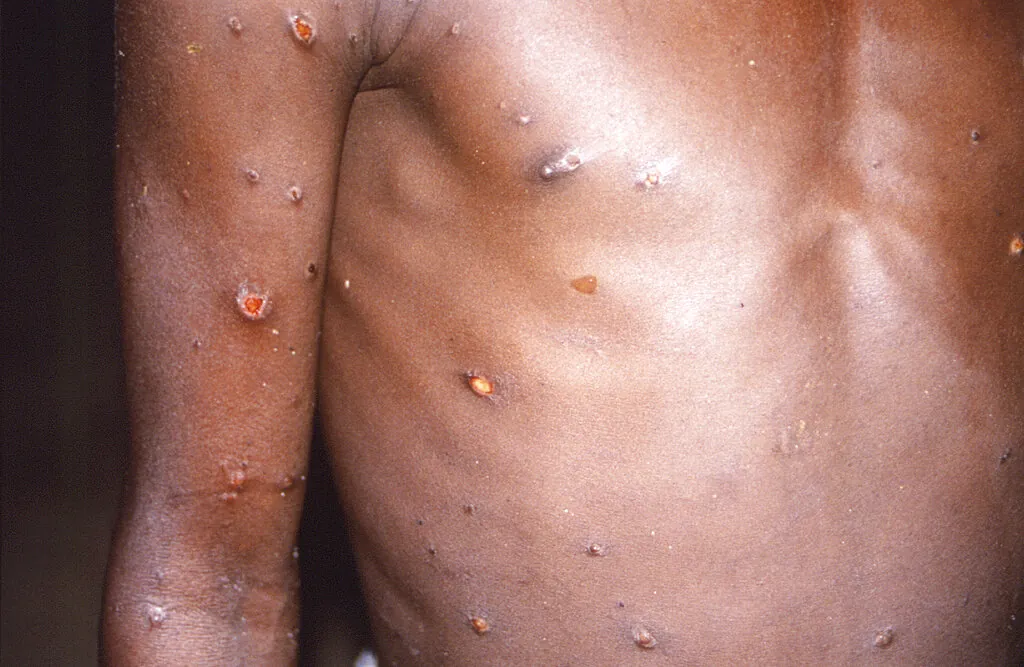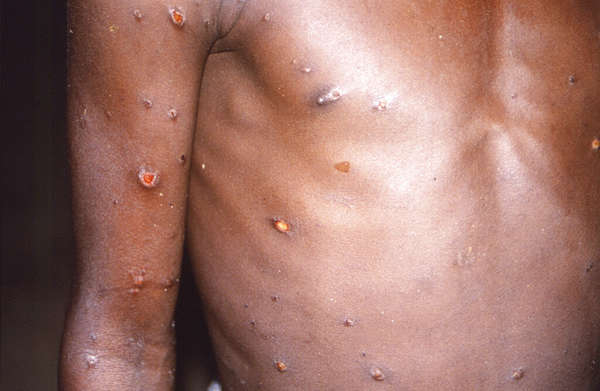
FILE – This 1997 image provided by U.S. Centers for Disease Control and Prevention shows the right arm and torso of a patient, whose skin displayed a number of lesions due to what had been an active case of Monkeypox.(CDC via AP, File)
OAN NEWSROOM
UPDATED 3:56 PM PT – Monday, July 4, 2022
Health officials in Iowa have reported the first case of Monkeypox in their state amid ongoing spread of the infection. According to the Iowa HHS, the first probable case of Monkeypox was identified last week and the patient’s contacts are being traced right now. Officials said the patient was likely infected during their recent international travel and is now isolating in their home.
The Biden administration has come under fire over its slow response to the outbreak. The CDC has reported 460 cases of Monkeypox across the US, with some states rolling out Monkeypox vaccines. The CDC suggests the smallpox vaccine is at least 85 percent effective against Monkeypox.
🔔Breaking: New York state will receive 8,195 doses of the Jynneos vaccine for #monkeypox, of which 5,989 will go to New York City. No word yet on when the doses will be available, but "soon" is the general idea from CDC.
— Benjamin Ryan (@benryanwriter) June 30, 2022
“What’s happening right now here in New York city is that there are not enough doses,” said a patient outside a vaccination tent in New York City. “I believe we will have enough in a couple of weeks. This is a city that is always looking for solutions and we do all we have to do in order to stay healthy. I believe we will have enough vaccines in a few days.”
The disease is spread through close contact with an infected animal or person, generally through lesions, body fluids or respiratory droplets. Unlike the coronavirus, Monkeypox droplets travel only up to a few feet and usually require prolonged contact for transmission.
“Risk to the general public is low,” the Iowa Department of Health and Human Services stated. “But anyone with a rash that looks like Monkeypox should talk to their healthcare provider. Even if they don’t think they had contact with someone who has Monkeypox.”
#HCP: Do you or your patients have questions about #monkeypox? We have answers! Check out our Clinician FAQs to learn more: https://t.co/lE3qcEG4Af. pic.twitter.com/8zq4OVVxCW
— CDC_eHealth (@CDC_eHealth) June 21, 2022
While health officials have said the risk will remain low, some reports indicate ongoing spread may require a pandemic style response.

